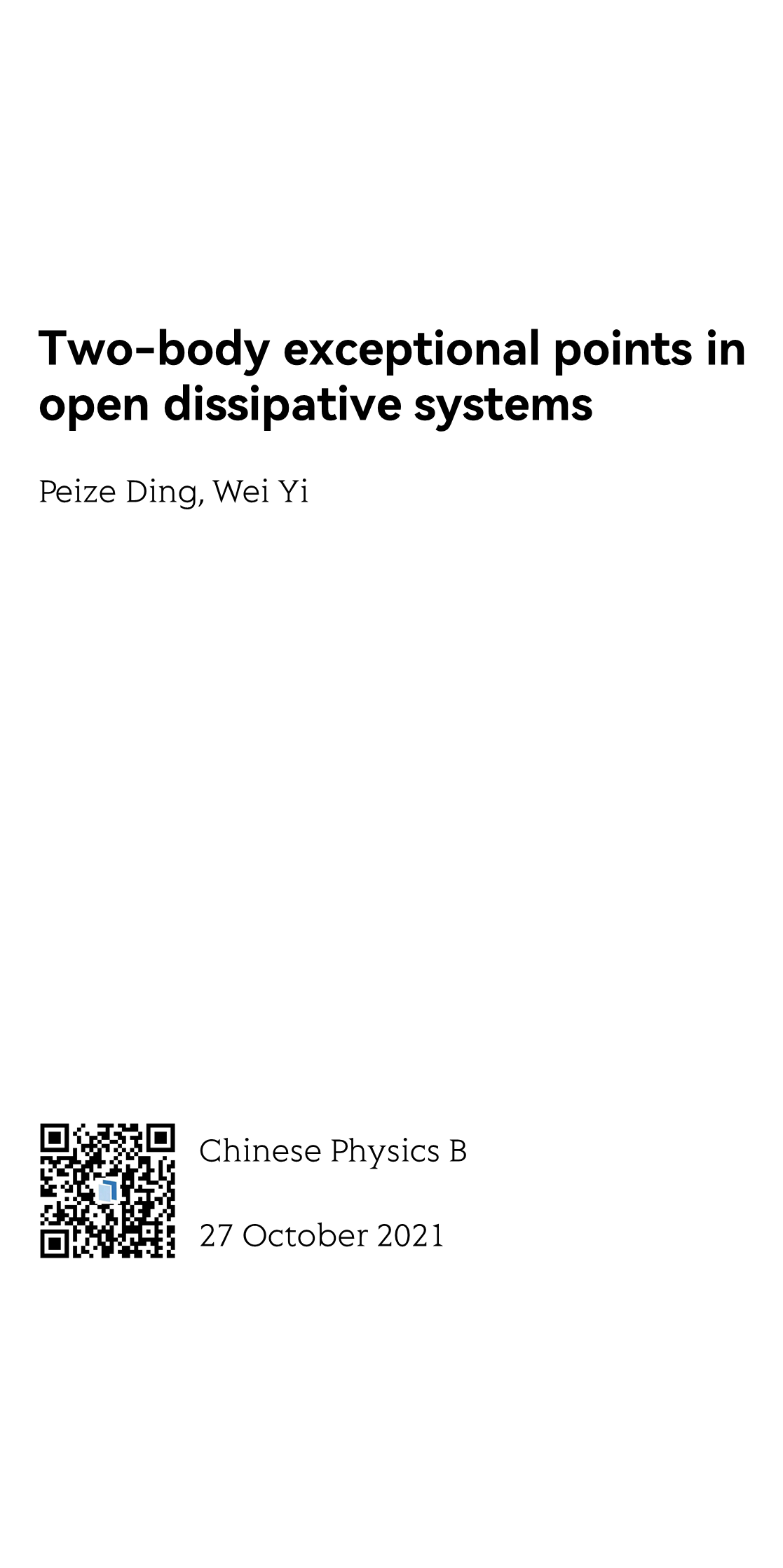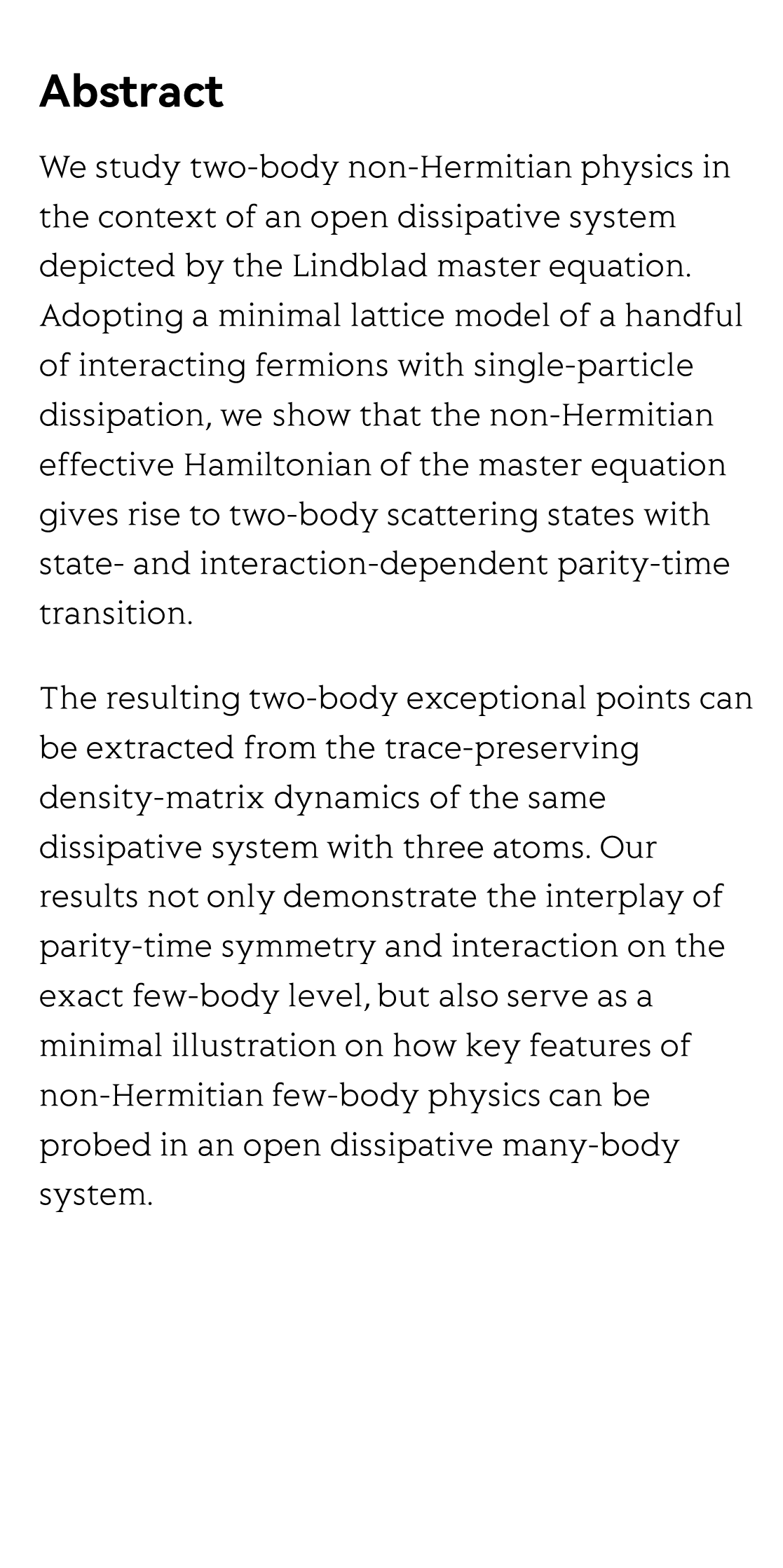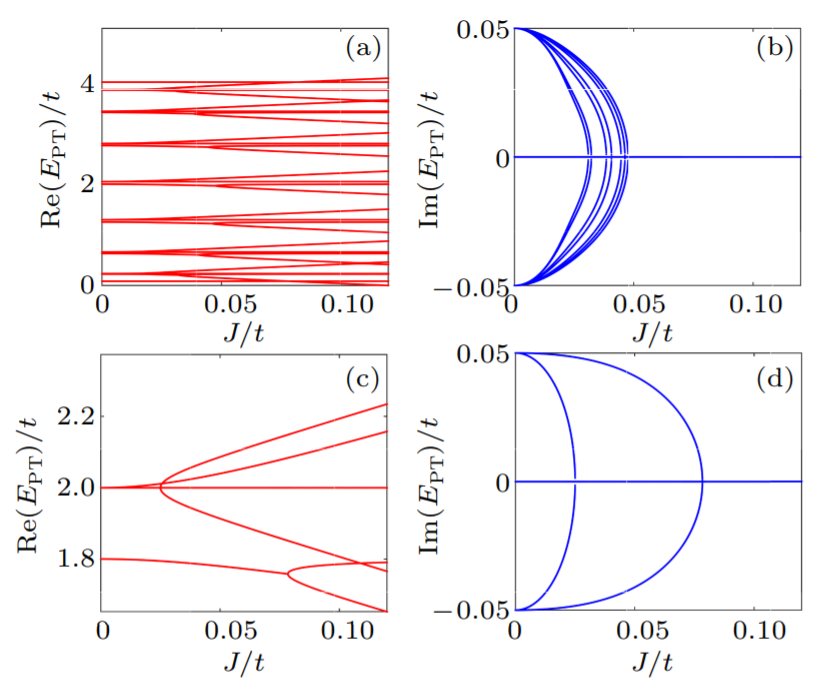(Peer-Reviewed) Two-body exceptional points in open dissipative systems
Peize Ding 丁霈泽 ¹, Wei Yi 易为 ¹ ²
¹ CAS Key Laboratory of Quantum Information, University of Science and Technology of China, Hefei 230026, China
中国 合肥 中国科学技术大学 中国科学院量子信息重点实验室
² CAS Center For Excellence in Quantum Information and Quantum Physics, Hefei 230026, China
中国 合肥 中国科学院 量子信息与量子科技前沿卓越创新中心
Abstract
We study two-body non-Hermitian physics in the context of an open dissipative system depicted by the Lindblad master equation. Adopting a minimal lattice model of a handful of interacting fermions with single-particle dissipation, we show that the non-Hermitian effective Hamiltonian of the master equation gives rise to two-body scattering states with state- and interaction-dependent parity-time transition.
The resulting two-body exceptional points can be extracted from the trace-preserving density-matrix dynamics of the same dissipative system with three atoms. Our results not only demonstrate the interplay of parity-time symmetry and interaction on the exact few-body level, but also serve as a minimal illustration on how key features of non-Hermitian few-body physics can be probed in an open dissipative many-body system.
Flicker minimization in power-saving displays enabled by measurement of difference in flexoelectric coefficients and displacement-current in positive dielectric anisotropy liquid crystals
Junho Jung, HaYoung Jung, GyuRi Choi, HanByeol Park, Sun-Mi Park, Ki-Sun Kwon, Heui-Seok Jin, Dong-Jin Lee, Hoon Jeong, JeongKi Park, Byeong Koo Kim, Seung Hee Lee, MinSu Kim
Opto-Electronic Advances
2025-09-25
Dual-frequency angular-multiplexed fringe projection profilometry with deep learning: breaking hardware limits for ultra-high-speed 3D imaging
Wenwu Chen, Yifan Liu, Shijie Feng, Wei Yin, Jiaming Qian, Yixuan Li, Hang Zhang, Maciej Trusiak, Malgorzata Kujawinska, Qian Chen, Chao Zuo
Opto-Electronic Advances
2025-09-25





